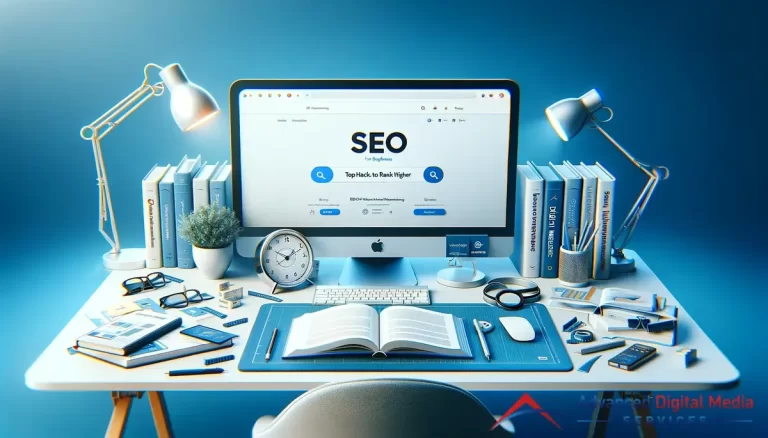Google focuses on a user-centric approach to ranking web pages. It rewards websites that perform well in terms of main content loading speed, first input delay, and visual stability, based on the Core Web Vitals.
Optimize for Core Web Vitals if your company is serious about its search presence and you want to get more leads from Google. A strategy targeting Core Web Vitals will allow you to provide a better user experience and increase conversion rates.
Cumulative Layout Shift is one of these key metrics. It measures the website’s “jumpiness” and how it reacts to elements loading. ADVDMS takes an in-depth look at what is CLS to help you see how it can be used to rank higher in search engines and give your visitors a better experience.
Google’s Core Web Vitals and its Role in SEO
Google’s Core Web Vitals are user-focused metrics that measure a webpage’s “health.” They also help to provide a seamless user experience.
Google is a search engine, and its job is to provide the most relevant results for a user’s query. Google’s Core Web Vitals metrics consist of three components: content loading time, interactivity, and visual stability. Google is gradually improving its algorithm to detect small details such as these to provide the best content.
Let’s put a spotlight on the visual stability metric or Cumulative Layout Shift.
What Is Cumulative Layout Shift?
Cumulative Layout Shift (CLS) is the metric used to measure the stability of your website’s pages while they load.
Have you noticed how images and links sometimes move down when a website loads? This movement could indicate that page elements aren’t visually stable and may have a poor Google CLS score.
Core Web Vitals CLS is optimized to prevent users from accidentally clicking or becoming frustrated when they are taken to a page that’s not their intended destination. Visual stability improves user experience and your overall SEO performance.
Unstable websites can be frustrating because the content changes as users look at it. It can cause unpredictable behavior, as well as annoyance. Sometimes, the effect of the shift can be benign. The user needs to locate their spot again on the page to continue viewing.
Other times, the effects can be even worse. A user might click on a button or link and expect to see the button or link. However, as they move around the page, elements can shift. Users find these shifts extremely frustrating. It could also turn potential clients away from your website.
How To Calculate CLS Scores
It is easy to determine if your website has marked layout shifts. You will be able to see if the layout is consistent as pages load. We recommend that you access your website using a variety of devices. Ask others to do so too.
You’ll find that Cumulative Layout Shift experiences can be very different. It depends on how optimized your website looks and the device you are using.
PageSpeed Insights is the best tool to measure your CLS website score. This can be accessed directly through Core Web Vitals CLS to see how Google views your website directly.
You can enter URLs and get a performance score based on Google’s data over the past 28 days. This score considers several metrics, such as CLS and LCP. PageSpeed Insights provides a breakdown of each score in percentage.
The user experience can vary depending on the device and internet connection they use and many other factors. Although it is impossible to predict the percentage of users who experience Cumulative Layout Shift, you can take steps to minimize this risk.
To comply with Google’s standards, your Cumulative Layout Shift score should not exceed 0.10. Any higher than that indicates significant, apparent shifts in the layout, leading to poor user experience.
What Causes Poor Google CLS Scores?
Poor CLS website scores are caused by the browser calculating the placement of all elements on the screen. The browser might not receive the information in time for parsing if it doesn’t have enough hinting. This can cause the rendering to alter, shifting the content within the viewport.
The higher the likelihood of elements moving on a page, the more work the browser must do, and the less information it has about rendering time, the better.
These page elements could contribute to a low Cumulative Layout Shift score:
- Images don’t specify height and width. This means that the browser doesn’t allocate space until the size of the image is known. The browser will do the rest.
- Any embedded element, iframe or ad that doesn’t specify the size.
- The new dynamic content is added above the current viewport. No screen size was provided before rendering.
- The rendering behavior of dynamically loaded fonts may be affected.
- Animations loaded after rendering the page.
In other words, any content that is rendered late or requires new size calculations by the browser could cause it to shift and lower its Cumulative Layout Shift score.
How To Improve Your CLS Score?
You can theoretically have a swift website but still has a poor CLS score. Like other Core Web Vitals metrics, CLS SEO scores may not correlate directly with site performance. Although your site may load fast, it can feel like it moves in accordion mode. Even so, significant layout changes can have a detrimental effect on the site’s UX. Google regards this as incredibly important, so it weighs each data point so heavily.
The following are some ways you can optimize your website for better Cumulative Layout Shift scores:
Add width and height attributes to images and videos.
Media files and ads are the main culprits in high CLS SEO scores. If you upload an image file of large resolution but don’t specify the height and width, it could break your page’s layout.
It is best to use images with the exact dimensions you intend to display for your website’s performance. The browser won’t need to spend time processing power resizing images. You should set height and width attributes for each image you display to ensure that the browser knows exactly where the image is located and doesn’t have to change the layout.
Reserve space for ads and embeds.
Embeds enable you to add web content from another page, such as YouTube videos, Google Maps, or Instagram posts. There are many ways to embed, and they can be done in a variety of ways:
- iFrame
- HTML code inline
- Javascript tag with HTML fallback
However, most embeddable widgets do not include the correct dimension of embedded content. For example, if you embed a tweet, it may be text-only or contain images. Most platforms that provide embeddable widgets do not include the dimensions in their code. When embedded content loads, it can cause significant layout changes.
Optimize font delivery.
Fonts, not surprising, are a major cause of page speed issues and affect everything about what is CLS.
Nearly all websites use at least one web font today (from Google Fonts or other sources). Because these fonts have different letter sizes and spacings than the default browser fonts, layout shifts can occur when the font finally loads. This happens especially if your font is slow to load.
It is possible to reduce this problem, but you might not be able to eliminate it completely. However, custom web fonts are essential for branding and good design.
Preloading fonts will ensure that font assets are rendered with a higher priority during page rendering. To host static assets like fonts, use aggressive caching and a reliable Content Delivery Network (CDN). The CDN will serve your visitors from the nearest and fastest network, resulting in faster loading speeds and minimizing layout shifts due to fonts.
There is no one right way to deal with web fonts. The optional value will not cause a re-layout when the web font is available. The preloaded font will also likely meet the first painting, so there won’t be any layout shifts.
Implement dynamic content correctly.
Every website contains dynamic content. We’ve all seen the following:
- Related contents
- Signup forms for the newsletter
- Sticky bars with messages or notifications
- Even sticky bar designs
It is best to place dynamic content below existing content. This will avoid layout changes caused by dynamic content. The exception to this rule is when dynamic content must be displayed above the existing content due to user interaction.
If you cannot insert dynamic content over existing content, you can reserve enough space.
Optimize Your CLS Score with ADVDMS
Optimizing your Cumulative Layout Shift score can be a long and complicated process. Although it might not immediately impact search engine rankings, it is a Core Web Vitals metric that will grow in importance as Google collects more data for CLS scores.
ADVDMS has SEO Services in Denver that can help you measure your website’s performance to meet Google’s Cumulative Layout Shift standards. ADVDMS’ team of SEO experts can design a website that ticks all the boxes to achieve better ranking results. Call us today and let our team help you reduce or eliminate layout shifts to improve user experience.





